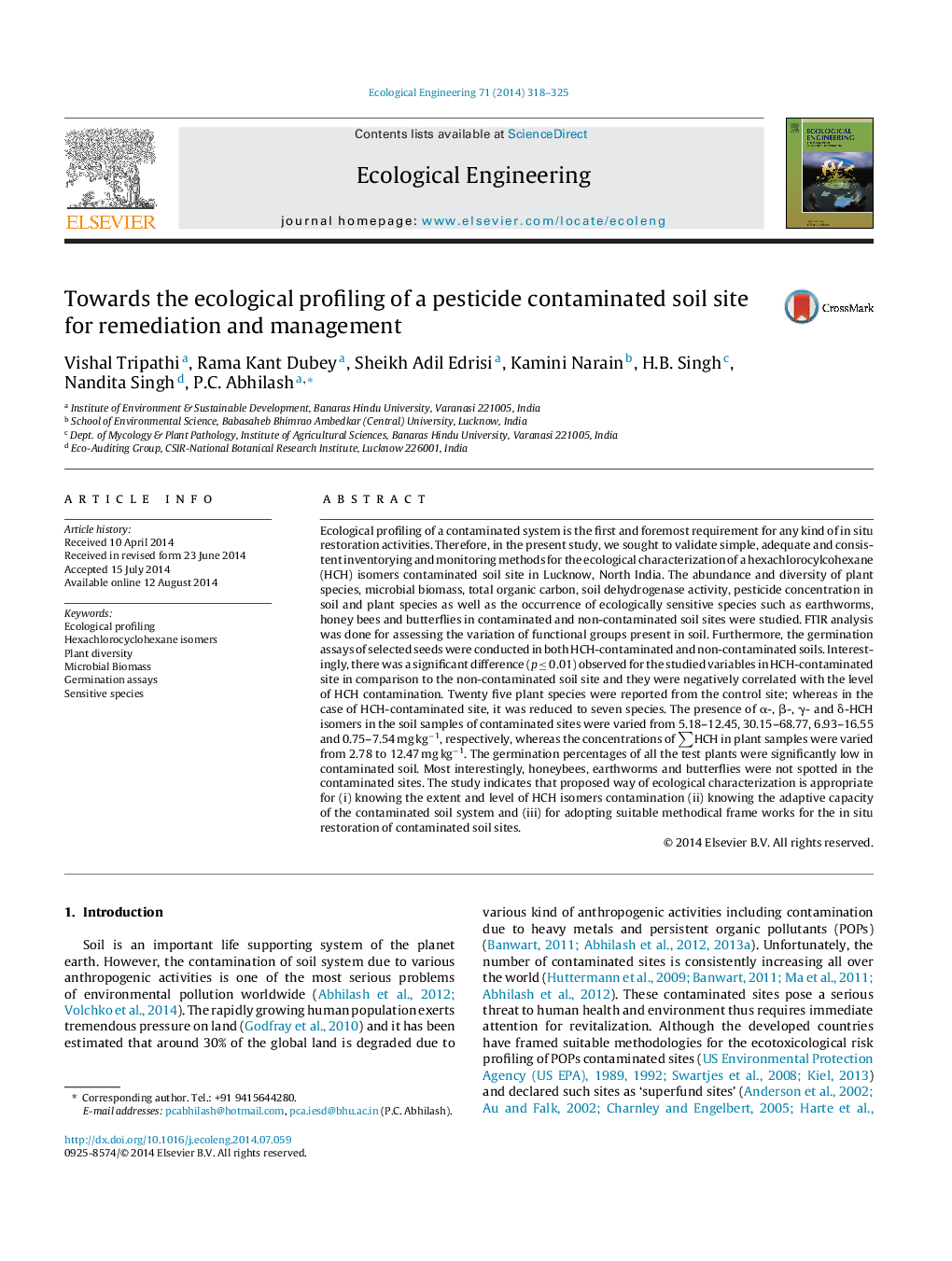| Article ID | Journal | Published Year | Pages | File Type |
|---|---|---|---|---|
| 4389167 | Ecological Engineering | 2014 | 8 Pages |
•Ecological profiling has been done in an HCH-contaminated soil site.•Plant diversity, MBC, TOC and dehhydrogenase were low in contaminated soil.•Sensitive species were absent in HCH-contaminated soil.•Low percentage of seed germination was observed in HCH-contaminated soil.•Ecological profiling is useful for decision making process.
Ecological profiling of a contaminated system is the first and foremost requirement for any kind of in situ restoration activities. Therefore, in the present study, we sought to validate simple, adequate and consistent inventorying and monitoring methods for the ecological characterization of a hexachlorocylcohexane (HCH) isomers contaminated soil site in Lucknow, North India. The abundance and diversity of plant species, microbial biomass, total organic carbon, soil dehydrogenase activity, pesticide concentration in soil and plant species as well as the occurrence of ecologically sensitive species such as earthworms, honey bees and butterflies in contaminated and non-contaminated soil sites were studied. FTIR analysis was done for assessing the variation of functional groups present in soil. Furthermore, the germination assays of selected seeds were conducted in both HCH-contaminated and non-contaminated soils. Interestingly, there was a significant difference (p ≤ 0.01) observed for the studied variables in HCH-contaminated site in comparison to the non-contaminated soil site and they were negatively correlated with the level of HCH contamination. Twenty five plant species were reported from the control site; whereas in the case of HCH-contaminated site, it was reduced to seven species. The presence of α-, β-, γ- and δ-HCH isomers in the soil samples of contaminated sites were varied from 5.18–12.45, 30.15–68.77, 6.93–16.55 and 0.75–7.54 mg kg−1, respectively, whereas the concentrations of ∑HCH in plant samples were varied from 2.78 to 12.47 mg kg−1. The germination percentages of all the test plants were significantly low in contaminated soil. Most interestingly, honeybees, earthworms and butterflies were not spotted in the contaminated sites. The study indicates that proposed way of ecological characterization is appropriate for (i) knowing the extent and level of HCH isomers contamination (ii) knowing the adaptive capacity of the contaminated soil system and (iii) for adopting suitable methodical frame works for the in situ restoration of contaminated soil sites.
